What is a Standing Yoga Pose?
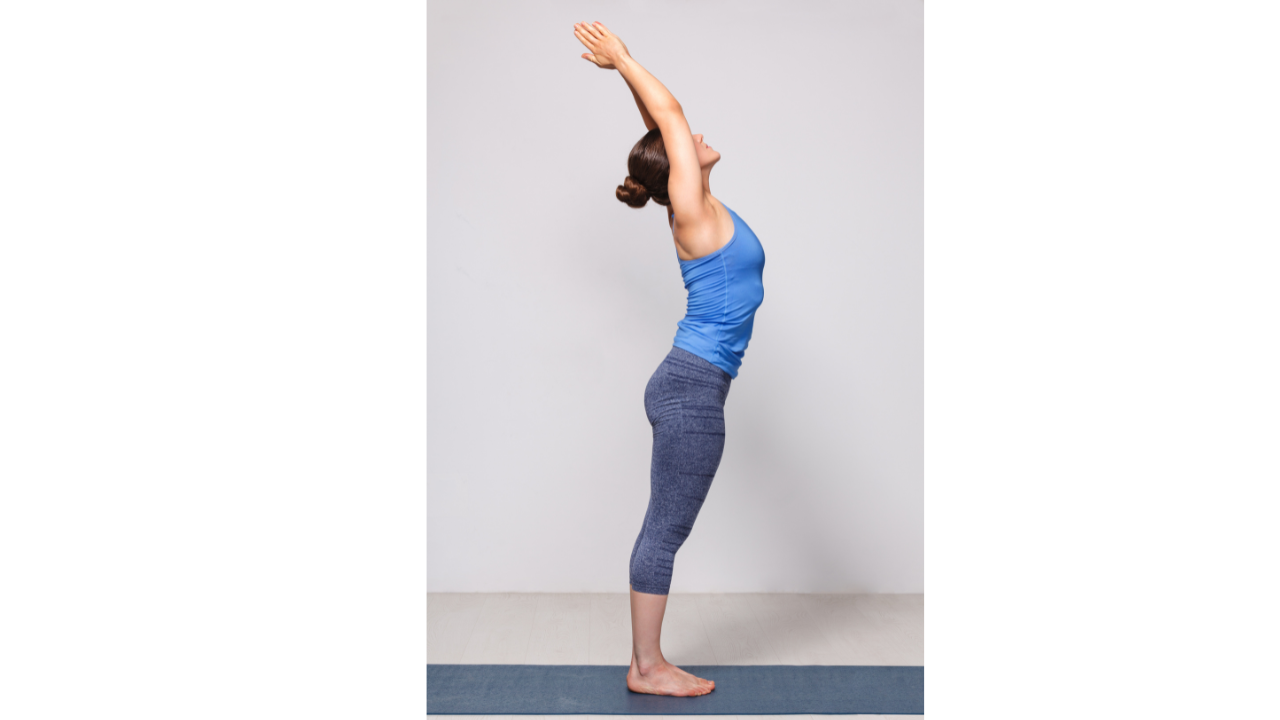
Standing yoga poses are asanas performed while upright, emphasizing balance, strength, and stability. These poses engage various muscle groups, improve alignment, and foster a deeper connection between body and mind. Practicing standing yoga poses helps enhance overall body awareness and encourages a sense of grounding
Benefits of Standing Yoga Poses
- Improved Balance: Standing yoga poses enhance stability and coordination, helping to prevent falls.
- Increased Strength: Many standing poses engage the legs, core, and back, building muscular strength throughout the body.
- Enhanced Posture: These poses promote better spinal alignment, which can alleviate back pain and improve overall posture.
- Heightened Focus: Balancing in standing poses cultivates mental clarity and concentration.
- Boosted Energy: Standing yoga poses can invigorate the body and mind, providing a natural energy boost.
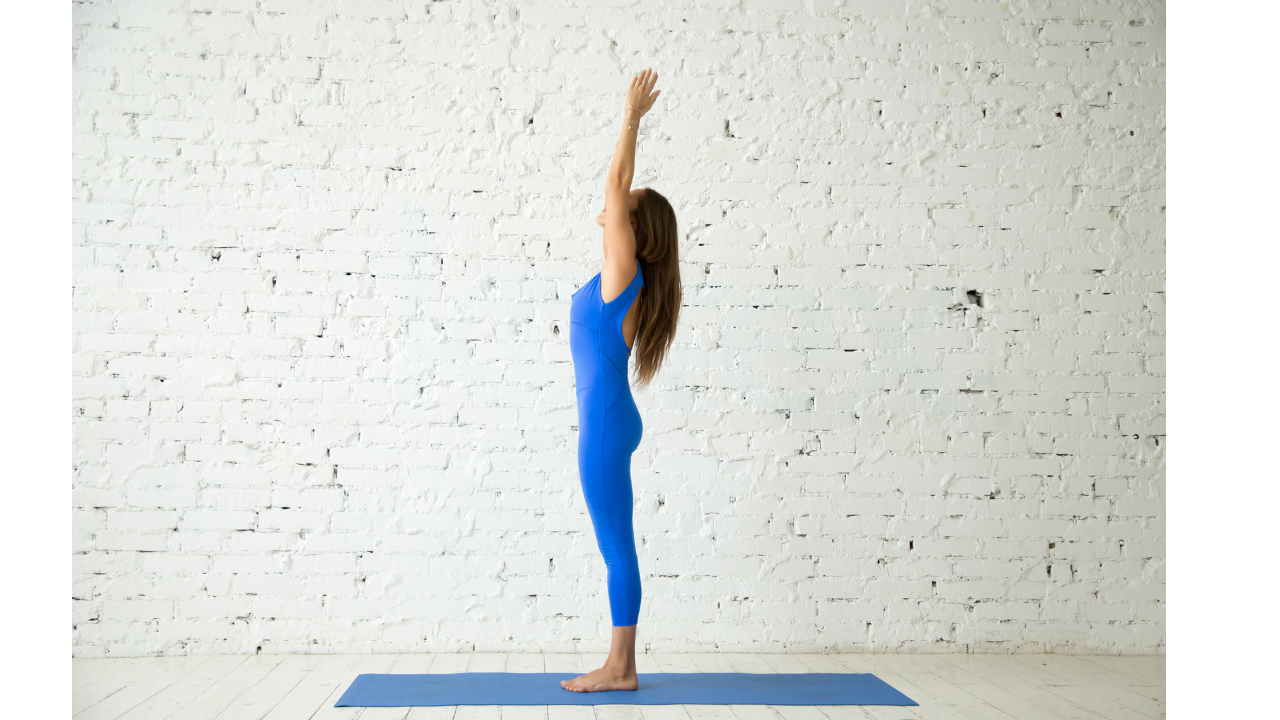
Tadasana (Mountain Pose)
How to Do: Stand tall with feet together, arms at your sides, and engage your legs and core. Benefits: Improves posture, balance, and body awareness. Contraindications: Avoid if you have low blood pressure or recent leg injuries.
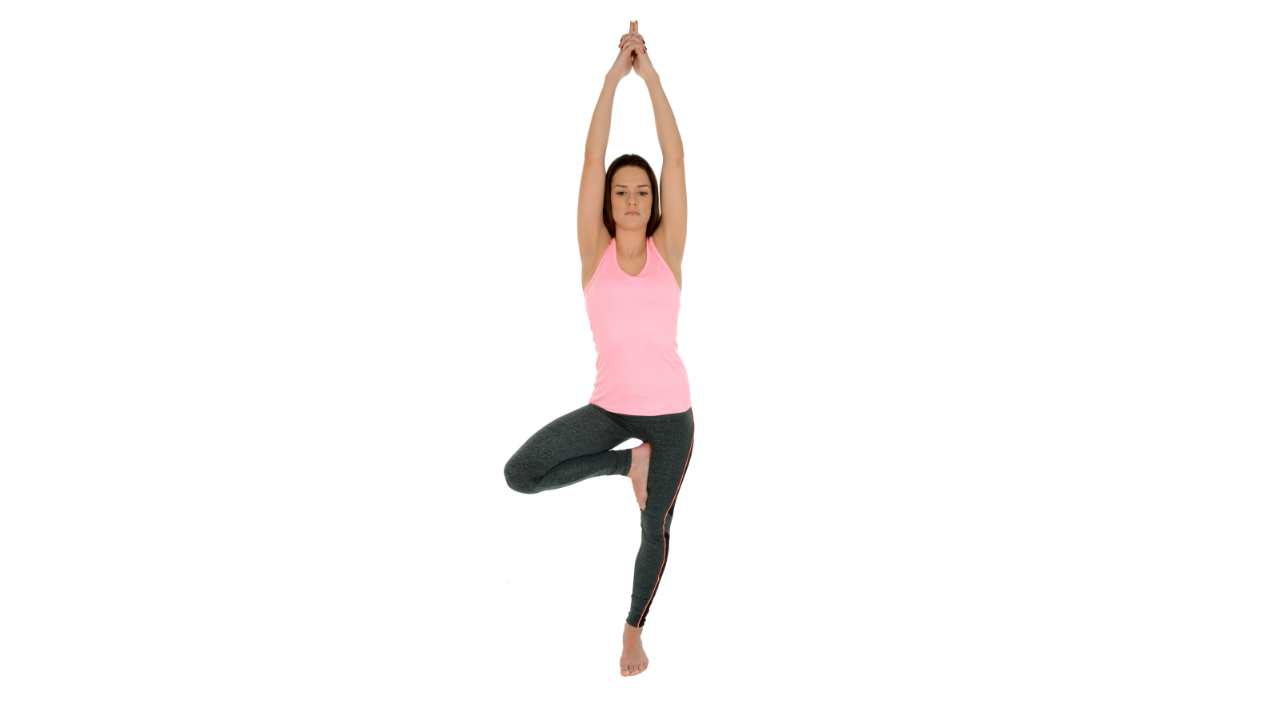
Vrksasana (Tree Pose)
How to Do: Stand on one leg, place the other foot on the inner thigh or calf, and bring hands to heart center or overhead. Benefits: Enhances balance, strengthens the legs, and improves focus. Contraindications: Avoid if you have balance issues or ankle injuries.
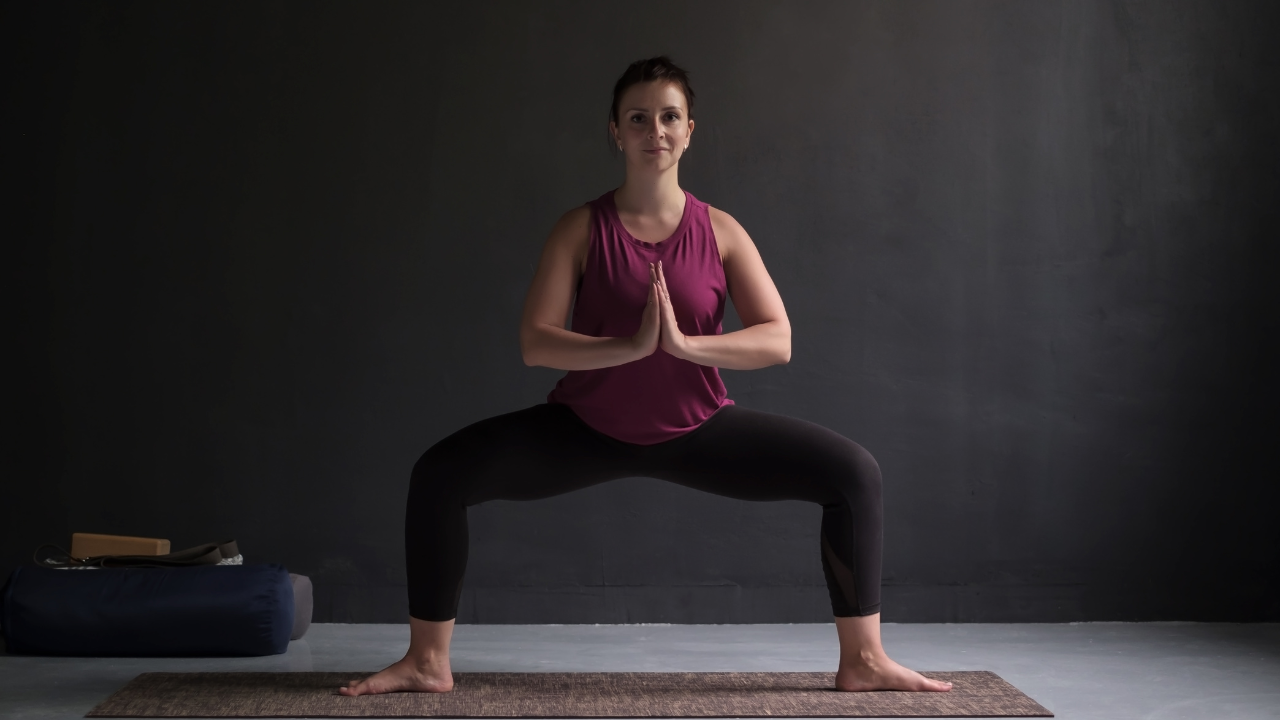
Utkata Konasana (Goddess Pose)
How to Do: Step one foot back into a lunge, keeping the front knee bent and the back leg straight. Benefits: Stretches the hip flexors and strengthens the legs. Contraindications: Avoid if you have knee or hip injuries.
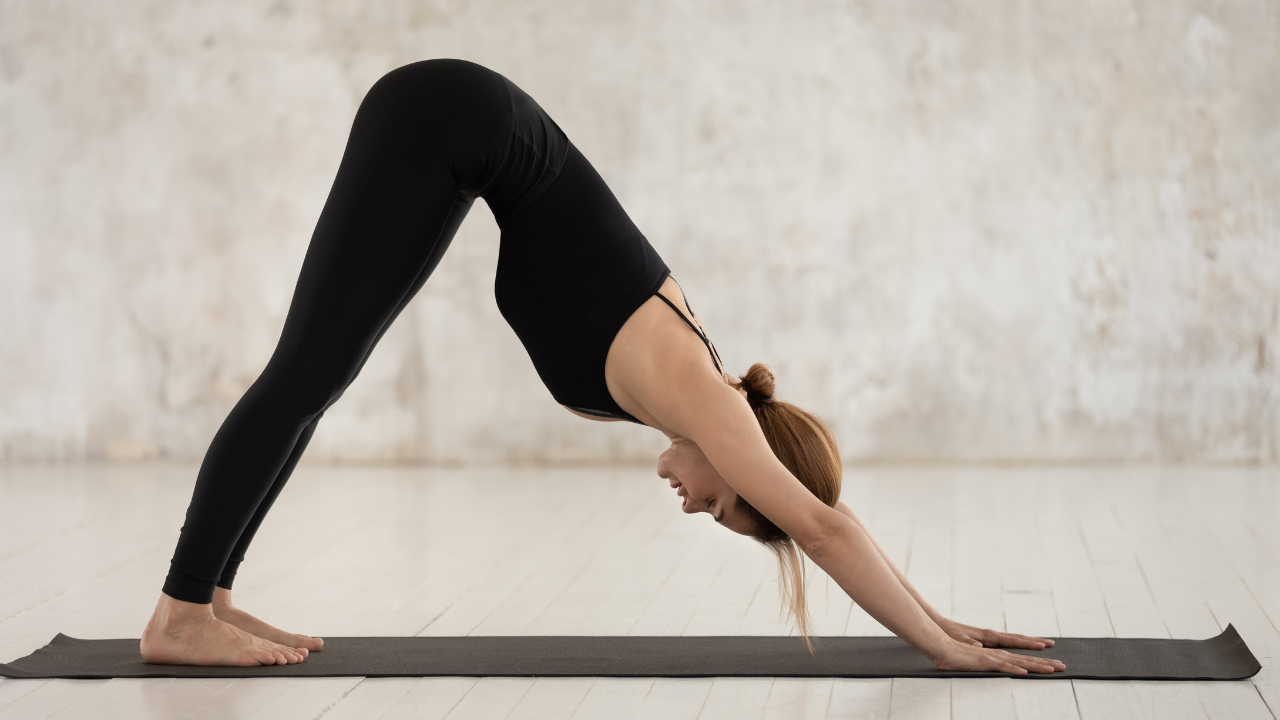
Adho Mukha Svanasana (Downward-Facing Dog)
How to Do: Bend forward from standing, place hands on the floor, and walk feet back into a downward dog position. Benefits: Stretches the entire body, strengthens the arms and legs. Contraindications: Avoid if you have wrist or shoulder injuries.
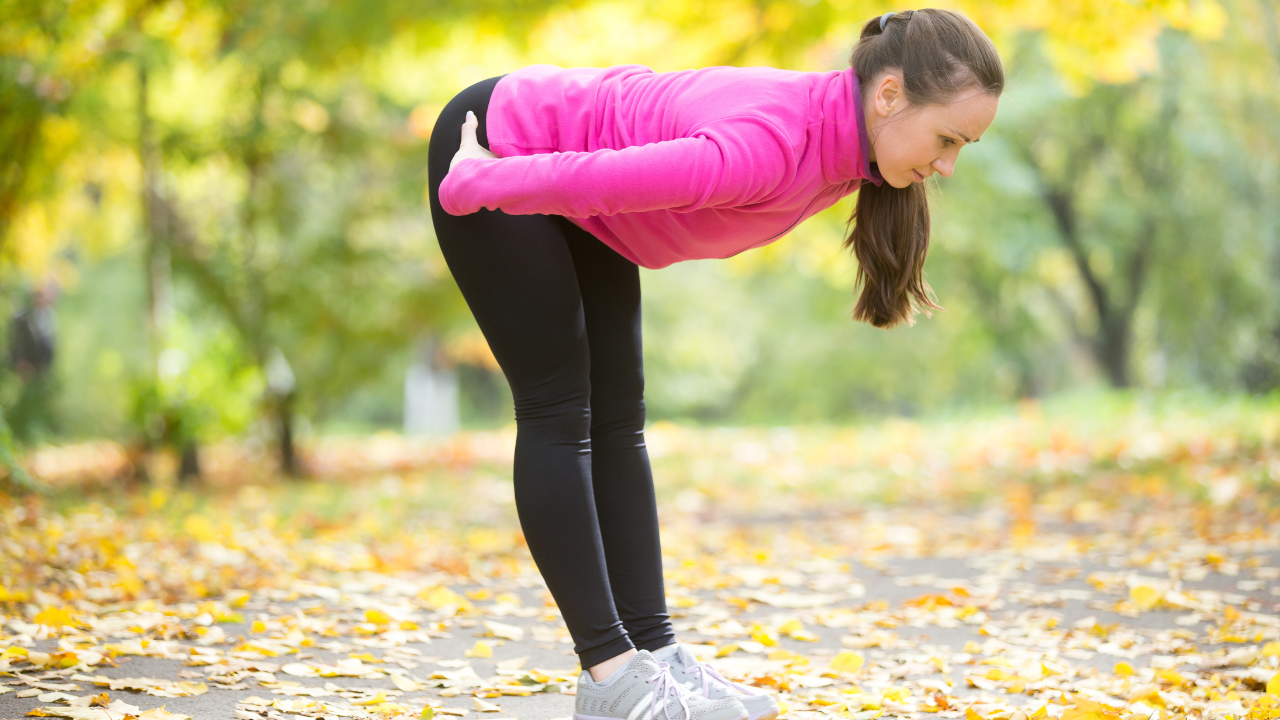
Half Forward Bend (Ardha Uttanasana)
How to Do: Stand tall, exhale, and fold forward at the hips, keeping the back straight and extending the arms forward. Benefits: Strengthens the back and hamstrings, improves posture. Contraindications: Avoid if you have lower back pain or injury.
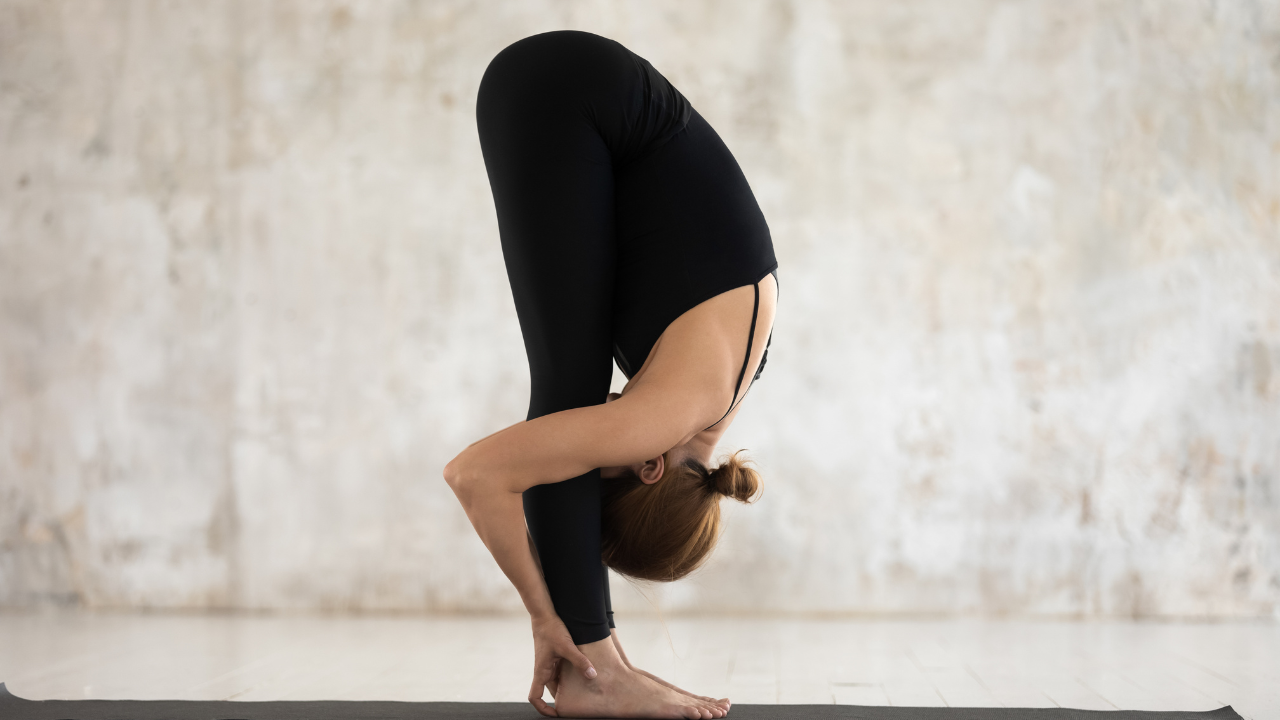
Uttanasana (Standing Forward Bend)
How to Do: Stand with feet hip-width apart. Inhale, raise arms overhead, and as you exhale, hinge at the hips to fold forward, letting arms hang or grasping your ankles. Benefits: Stretches hamstrings and calves, calms the mind, and improves circulation. Contraindications: Avoid if you have back injuries or high blood pressure. Caution during pregnancy after the first trimester.
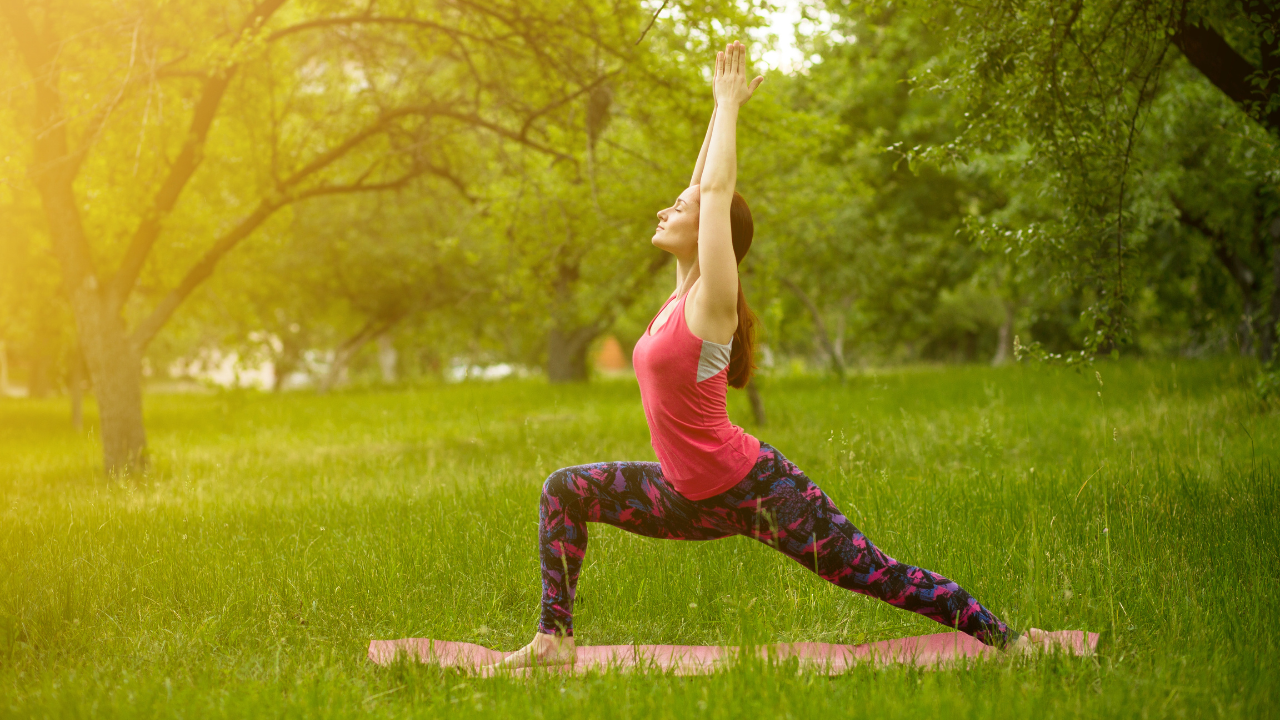
Virabhadrasana I (Warrior I Pose)
How to Do: Step one foot back, bend the front knee, and raise arms overhead, keeping the chest open. Benefits: Strengthens the legs, opens the hips and chest. Contraindications: Avoid if you have shoulder injuries or severe back pain.
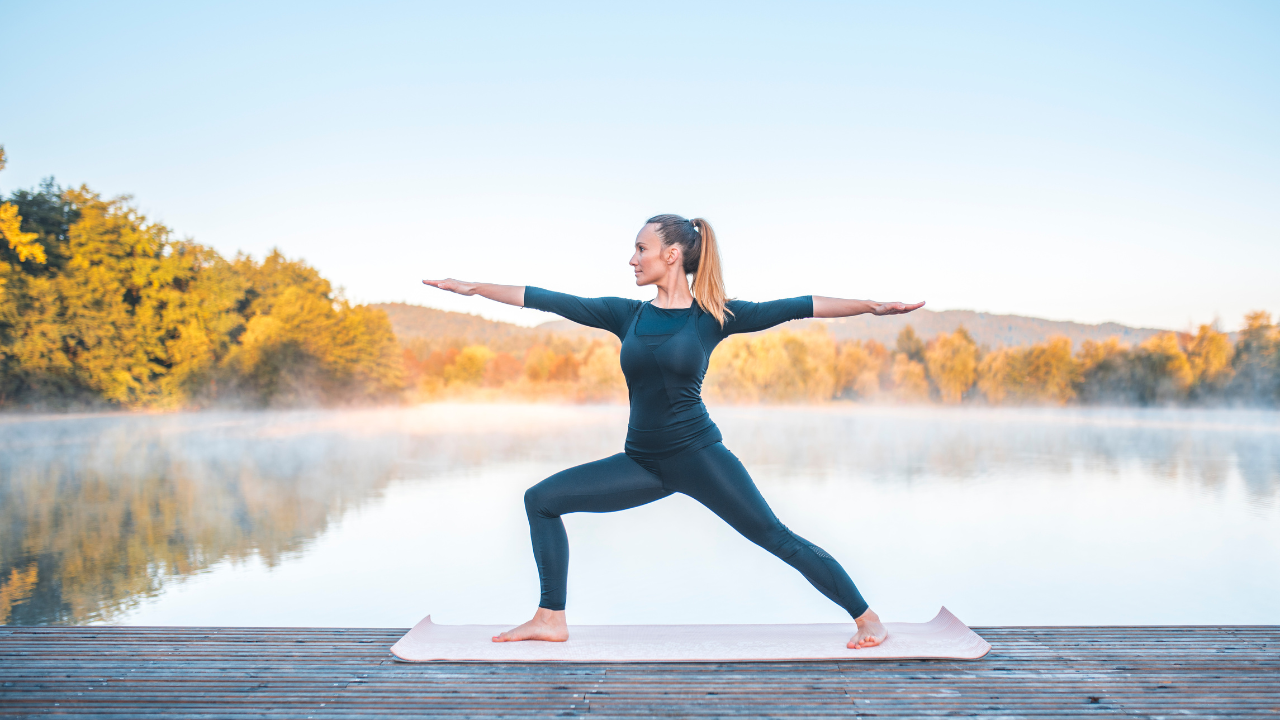
Virabhadrasana II (Warrior II Pose)
How to Do: From Warrior I, open the hips, turn the front foot out, and extend arms parallel to the floor. Benefits: Improves stability and focus, strengthens the legs and arms. Contraindications: Avoid if you have neck issues (look forward instead of over the front hand).
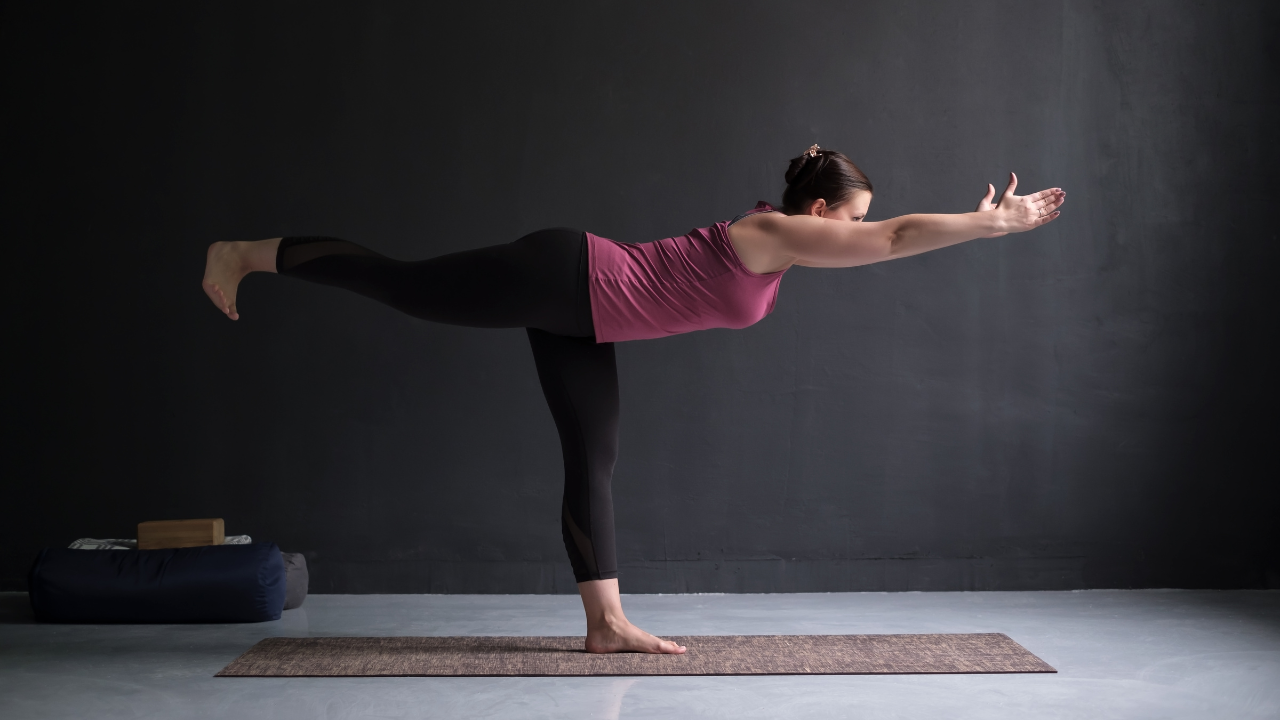
Virabhadrasana III (Warrior III Pose)
How to Do: Stand on one leg, extend the other leg back, and reach arms forward for balance. Benefits: Strengthens the legs, improves balance, and engages the core. Contraindications: Avoid if you have balance issues or ankle injuries.
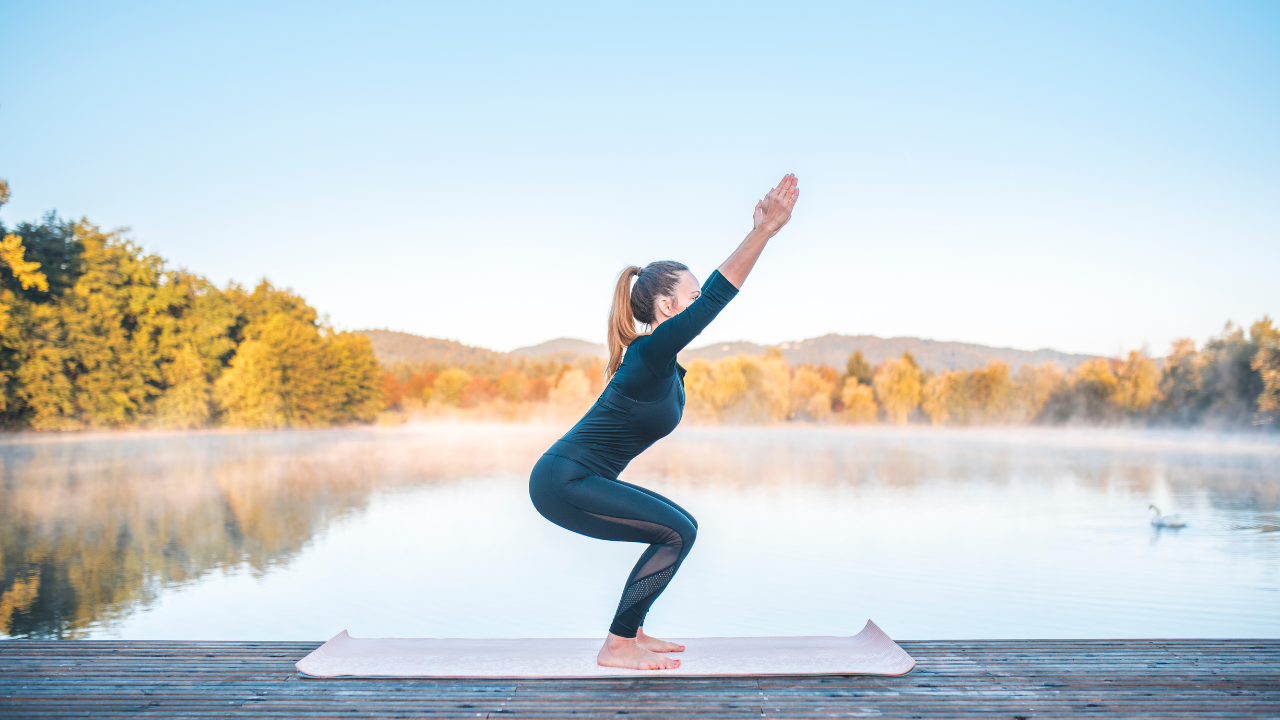
Utkatasana (Chair Pose)
How to Do: Bend your knees as if sitting back in a chair, arms extended overhead, and keep the back straight. Benefits: Strengthens the legs and core, enhances endurance. Contraindications: Avoid with knee or ankle injuries.
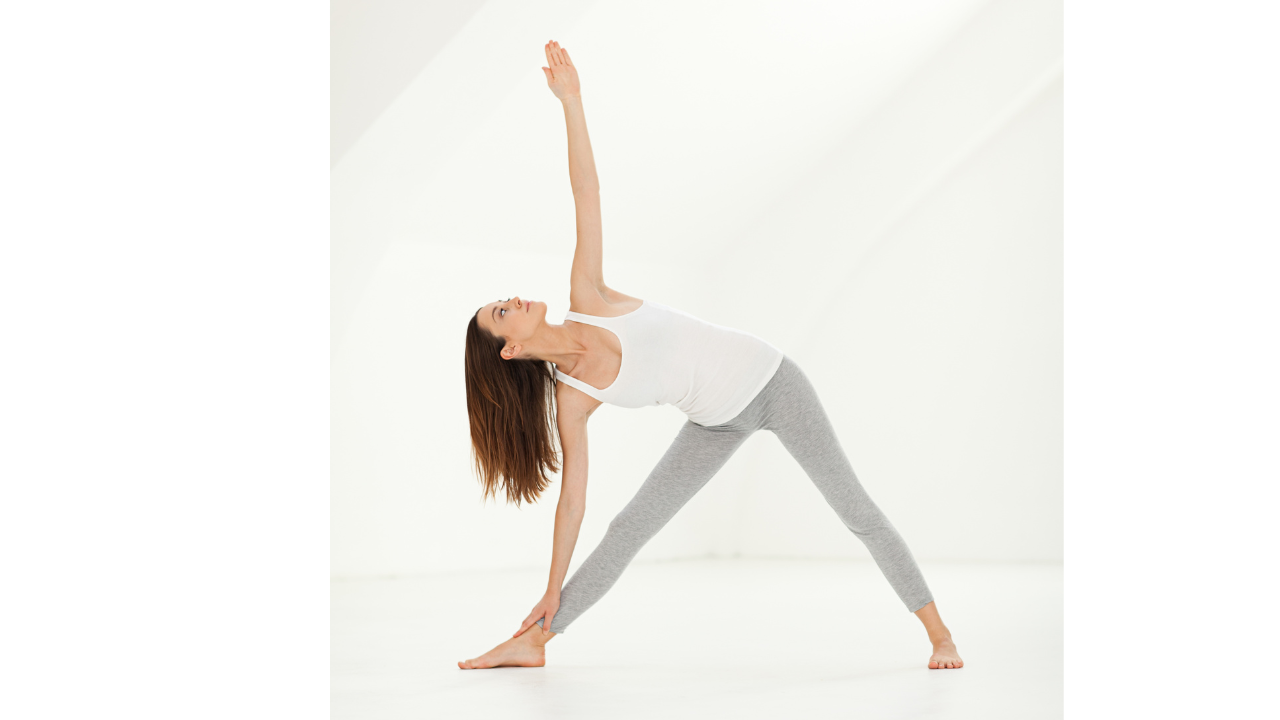
Trikonasana (Triangle Pose)
How to Do: Stand with legs wide apart, reach one arm towards the floor and the other up, keeping both sides of the body long. Benefits: Stretches the legs and torso, improves balance and coordination. Contraindications: Avoid if you have a history of neck or back injuries.
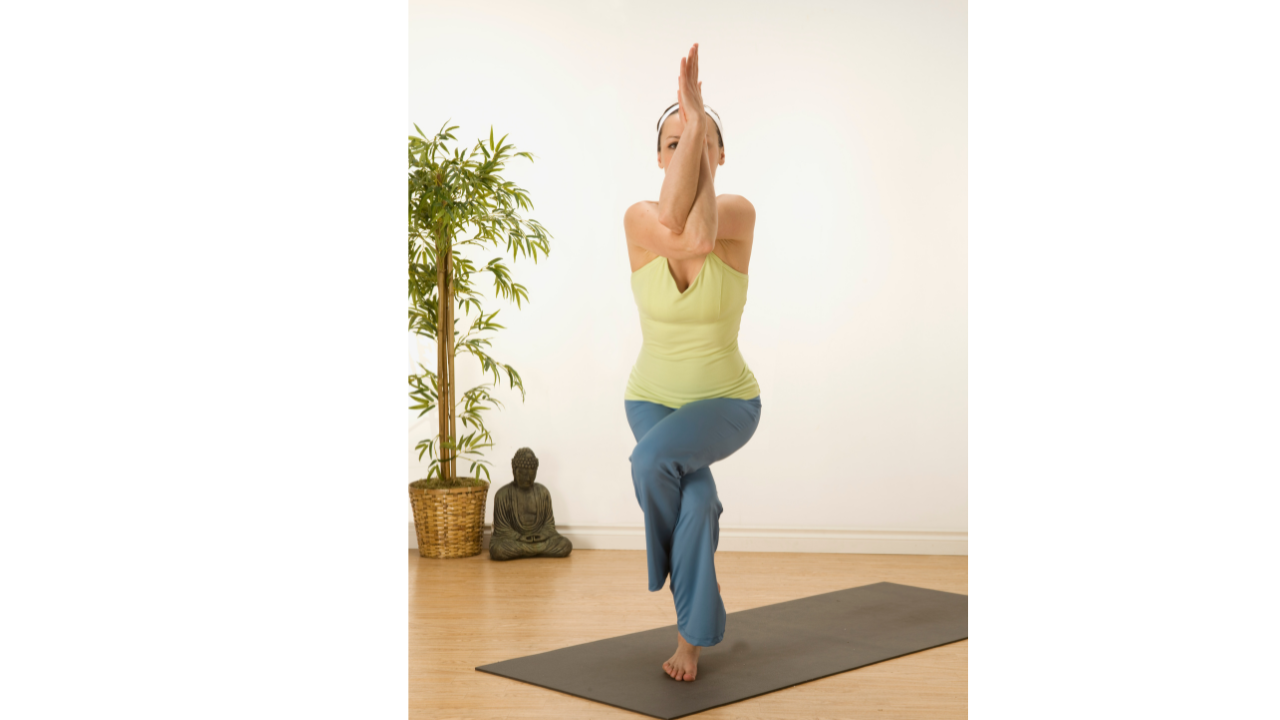
Garudasana (Eagle Pose)
How to Do: Balance on one leg, wrap the other leg around, and bring arms in front, crossing them at the elbows. Benefits: Improves balance and concentration, stretches the shoulders and legs. Contraindications: Avoid if you have severe knee or ankle issues.
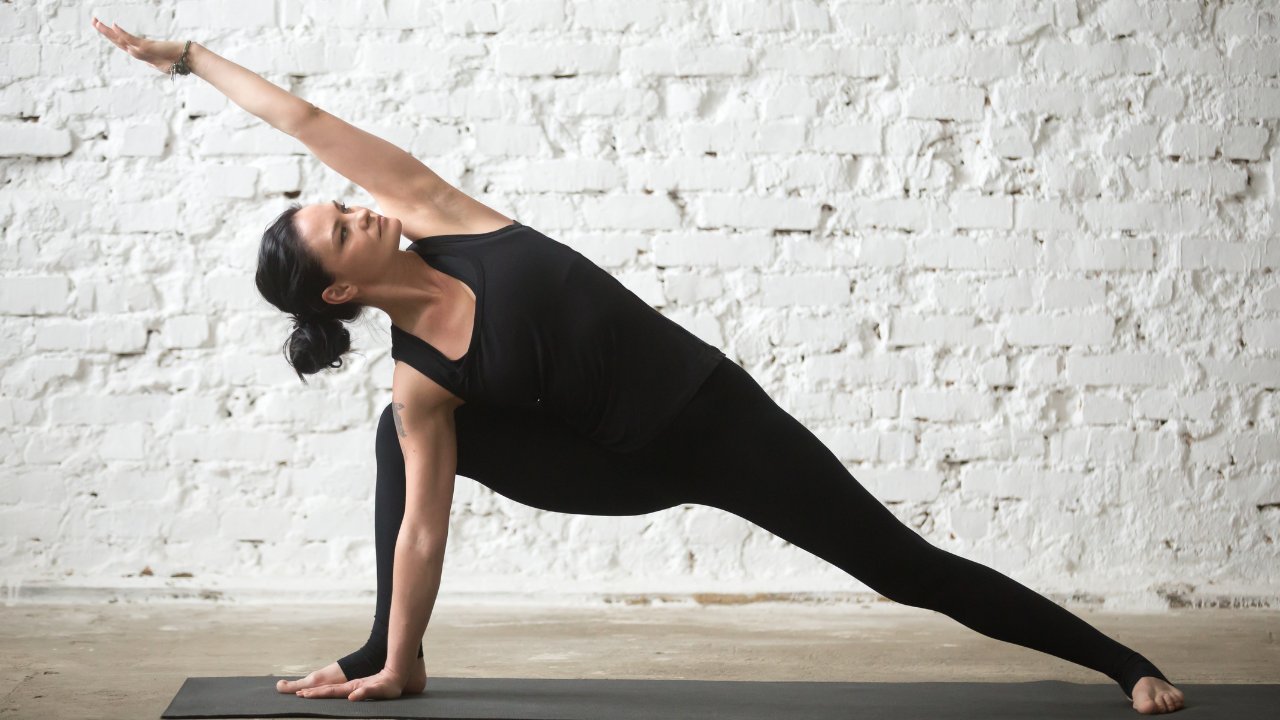
Parsvakonasana (Side Angle Pose)
How to Do: Bend one knee, place the elbow on the knee, and extend the other arm overhead, creating a side stretch. Benefits: Strengthens the legs and stretches the hips, groin, and side body. Contraindications: Avoid if you have knee or ankle injuries.
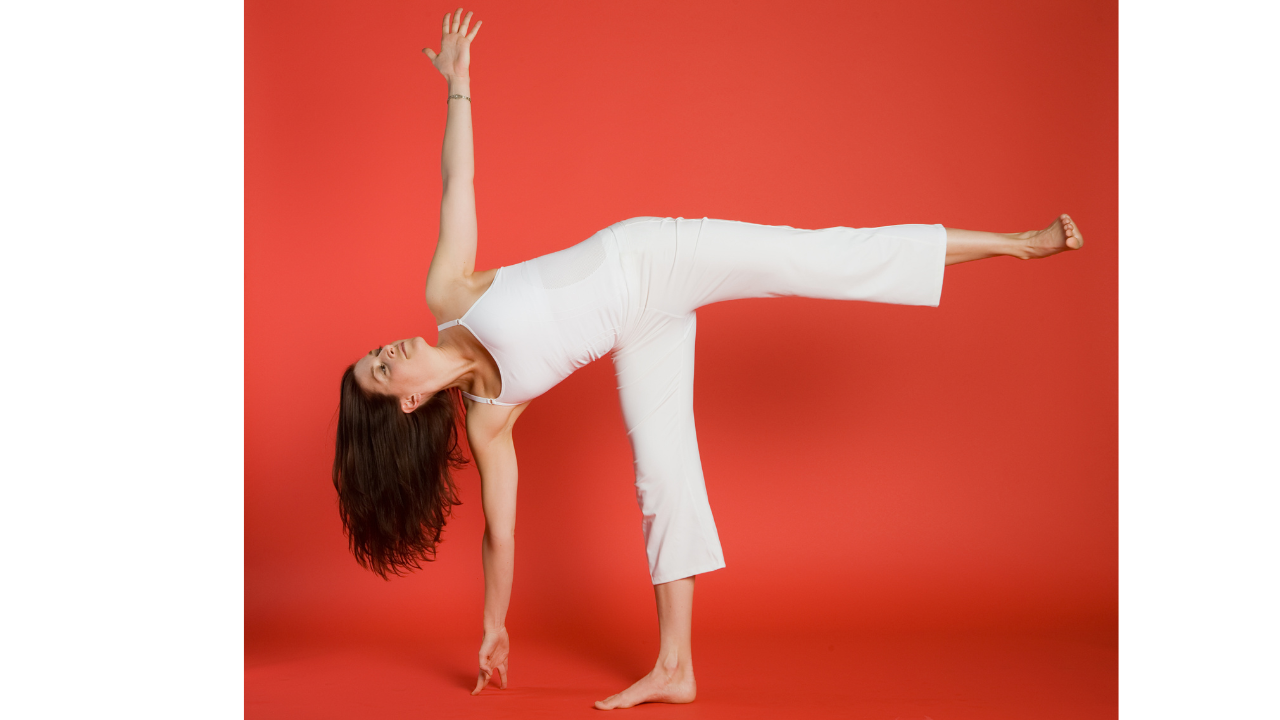
Ardha Chandrasana (Half Moon Pose)
How to Do: From a standing position, bend to one side, placing one hand on the floor and extending the other overhead. Benefits: Strengthens the legs, improves balance and coordination. Contraindications: Avoid if you have severe back issues or balance problems.

Anjaneyasana (Low Lunge Pose)
How to Do: Step one foot forward, lower the back knee, and raise arms overhead for a gentle stretch. Benefits: Stretches the hip flexors and opens the chest. Contraindications: Avoid if you have knee pain or hip issues.
Conclusion
Standing yoga poses are essential for building strength, balance, and body awareness. By incorporating these poses into your practice, you can enhance your overall physical and mental well-being. Remember to listen to your body, practice safely, and consult with a healthcare provider if you have any contraindications.
